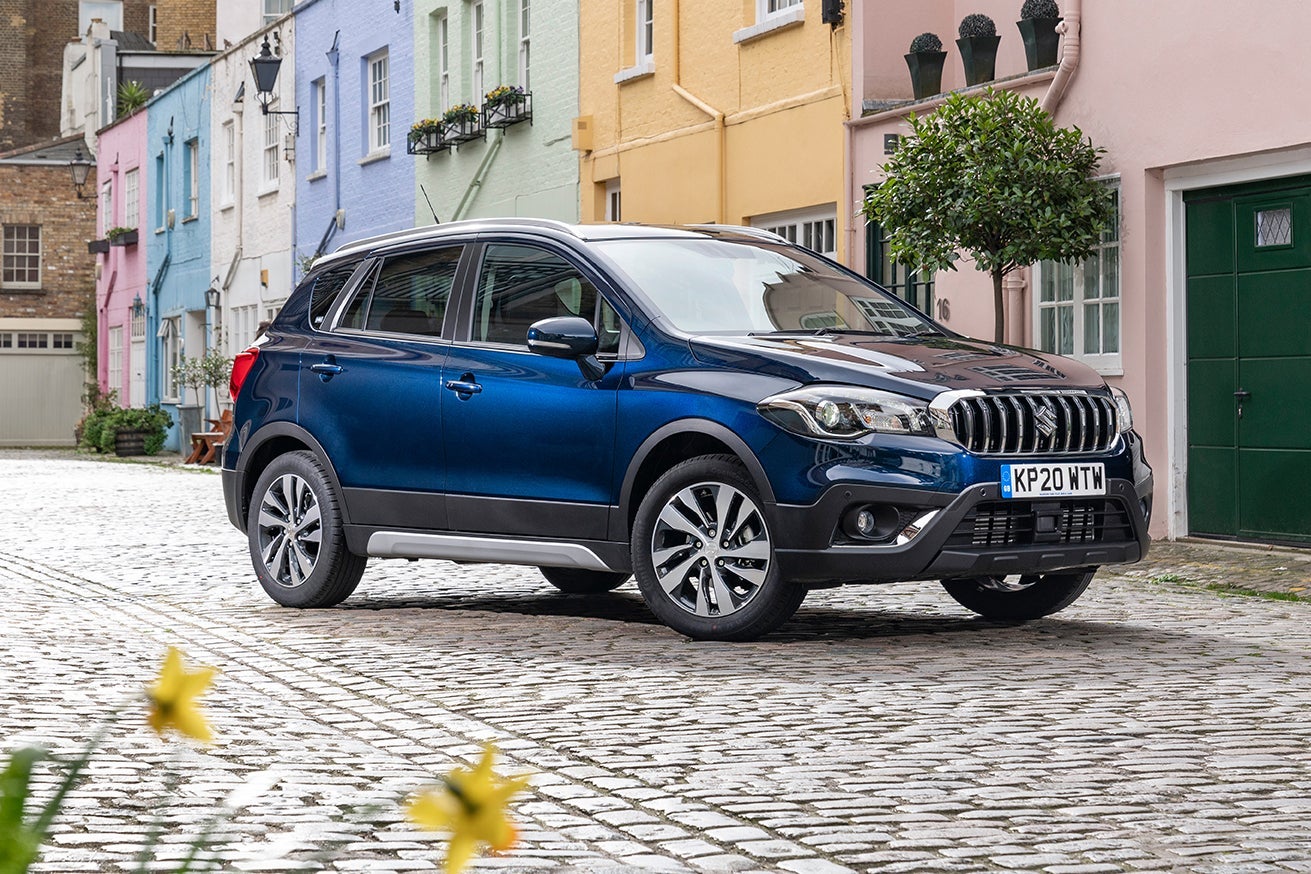Suzuki SX4 S-Cross (2013-2021) Review
Written by Andrew Brady
Quick overview
Pros
- Well-engineered, solidly built, option of four-wheel drive
- Agile and good to drive
- Perkey Boosterjet engines that are economical
Cons
- Rear headroom on the tight side
- Not as practical as its rivals
- The 1.6-litre only has a five-speed gearbox
Overall verdict on the Suzuki SX4 S-Cross
"A convincing all-round package that married practicality with decent engines and the option of all-wheel drive. It was reasonably priced, quite well equipped and easy to drive in town like any other standard hatchback or estate. The Suzuki SX-4 S-Cross covered most of the small hatch base with clinical ease and supreme quality which ruffled its rivals."
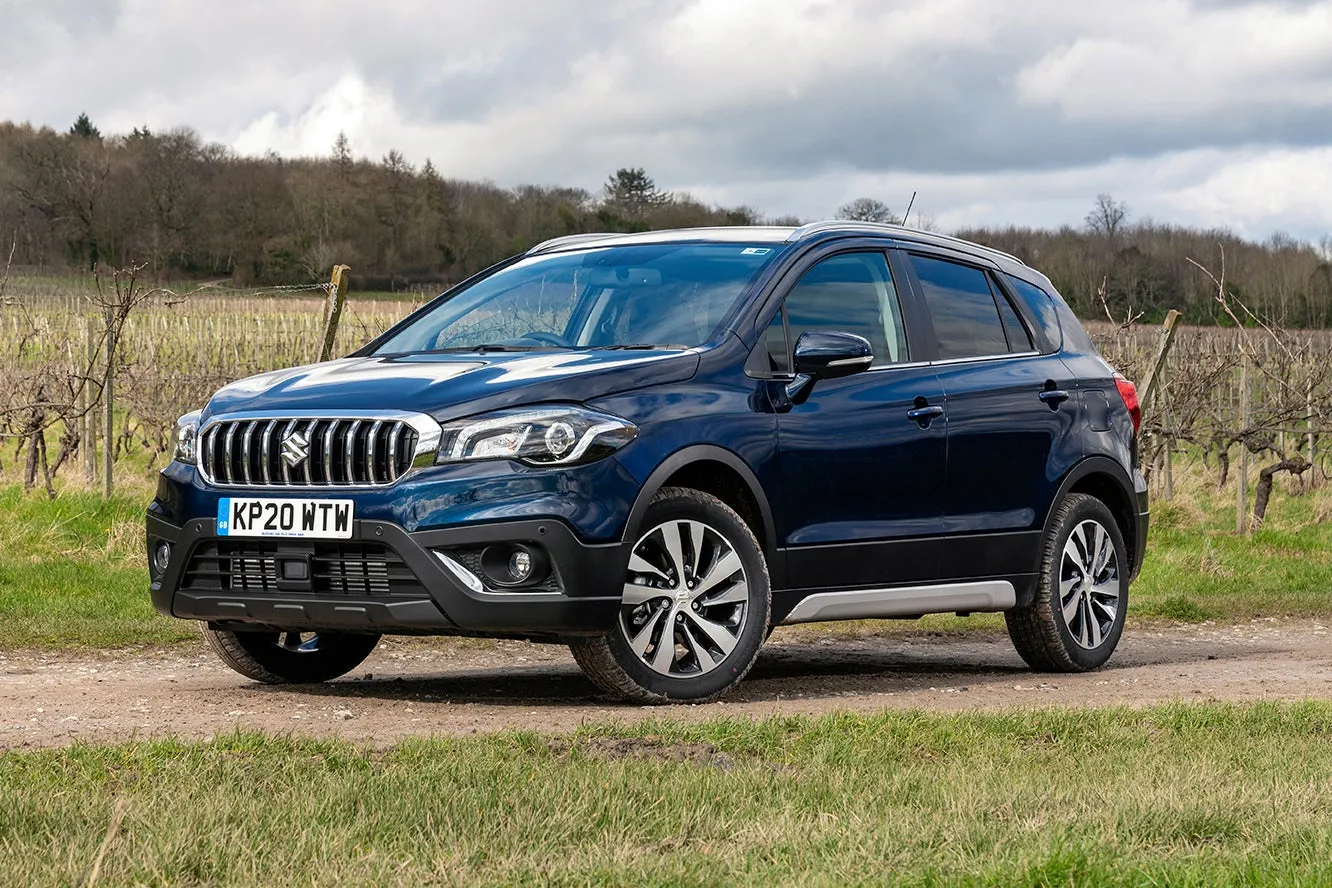
It was a case of ‘Honey, I shrunk the Nissan Qashqai’ with the Suzuki SX-4 S-Cross. So if you can see a few similarities, that’s no accident - Suzuki wanted its family-friendly SUV to have the same attributes as the car that is the nation’s best-selling crossover. And, to some extent, Suzuki has succeeded. The SX-4 S-Cross delivers the same sort of package as the Qashqai but it’s more keenly priced and offers lower running costs.
Which begs the question - why don’t you see more Suzuki SX-4 S-Crosses on the road and why is it still relatively rare on the used market when compared with something like a Nissan Qashqai or Ford Kuga?
The answer is simple, really: The Suzuki Vitara. This stalwart of the Suzuki range did everything that the SX-4 S-Cross did but was slightly larger, slightly more practical, was a better all-rounder and was better known. As a result, buyers in Suzuki showrooms tended to plump for the Vitara, rather than the capable, but smaller SX-4 S-Cross.
Suzuki buyers were spoilt for choice, as Suzuki had a long history of making rugged off-roaders, but it hadn't always made family-friendly ones. The Suzuki SX-4 S-Cross fell firmly into the family-friendly category, with the choice of two or four-wheel drive in a car that was similar in size to a Ford Focus.
That meant the SX-4 S-Cross was equally at home in towns and cities as it was taking on rough and muddy tracks in the countryside. And, come winter, the SX-4 S-Cross comes into its own, confident and sure-footed with snow and ice. In this regard, the SX4 S-Cross competed with the likes of the Renault Captur and Skoda Yeti and its stablemate, Vitara.
Power came from 1.6 petrol and diesel engines in pre-facelift examples, while two turbocharged petrol engines - a 1.0 and 1.4 - were introduced in 2016 and replaced the 1.6.
The diesel wasn't much to write home about. It was a bit rough around the edges, both at idle and when accelerating, which was why opting for one of the smooth petrol engines was better. The 1.0-litre and 1.4-litre turbocharged engines were great and much preferred over the older 1.6-litre. Both came with six-speed gearboxes. This meant they were refined on the motorway over the 1.6-litre which only ever came with a five-speed transmission. That said, the 1.6-litre engine was eager and offered decent fuel consumption.
Where the SX-4 S-Cross really surprised was out on the road - it was surprisingly good to drive. It was nimble, agile and pleasing to drive, with responsive steering and well-controlled body roll. Grip was very good in Allgrip four-wheel drive versions. The only minor criticism was that the ride quality could've been better.
It was a case of form over function inside. There was nothing wrong with the SX-4 S-Cross’s interior, but it was a bit on the plain side and lacked much of the design flair you would've found in other small crossovers. For some buyers, that simplicity would've been part of the appeal. Although mid-range SX-T models and above got an infotainment system, it was not the speediest or most intuitive - it used a touchscreen slider for volume, which could be tricky to use on the move.
A facelift came in late 2016. This made it look tougher, adding a distinctive chrome grille and a suite of styling changes, including raised suspension, chunky alloy wheels, and new plastic cladding above the wheel arches and side skirts. It made the SX-4 S-Cross stand out more than ever, though these styling changes were not to everyone’s taste.
Looking for a used car for sale? We've got 100s of Suzuki Approved Used Cars for Sale for you to choose from, including a wide range of Suzuki SX-4 S-Cross cars for sale.
Is the Suzuki SX-4 S-Cross right for you?
There was no shortage of alternatives to the Suzuki SX-4 S-Cross - indeed there was even competition from within Suzuki’s own range of cars in the shape of the excellent Vitara.
The two things to consider when weighing up whether an SX4 S-Cross could be for you are: How much space you need and is four-wheel drive important. If you need more load area - whether it’s because you have a growing family or a hobby/business that requires room, then you may want to consider the larger Vitara. If space isn’t a concern, you for the SX-4 S-Cross, as it’s as easy to drive as any other regular hatchback.
The same goes for four-wheel drive. If you don’t need it then there are plenty of other options to consider and it’s worth checking them out - particularly if an upmarket interior is important to you. this is one area where the SX-4 S-Cross falls down.
What’s the best Suzuki SX-4 S-Cross model/engine to choose?
The facelifted SX-4 - from late 2016 onwards - is the one to go for. Although this didn’t add much in the way of bells and whistles in terms of equipment and specification, it did introduce two very good turbocharged petrol engines: the 1.0-litre and 1.4-litre Boosterjets. These offer a tangible and noticeable difference over the previous 1.6, are great to drive and come with a six-speed manual gearbox, which makes life much easier on the motorway.
If budget allows, also consider the mild hybrids introduced from mid-2020 onwards. This is offered on the 1.4-litre Boosterjet and offers up to 20 per cent lower CO2 emissions, a greater level of pulling power from the engine and a 15% overall improvement in fuel consumption. It replaced the standard 1.4-litre with manual transmission in 2020.
What other cars are similar to the Suzuki SX-4 S-Cross?
The Suzuki SX-4 S-Cross is a size and shape that means everything from a Ford Focus hatchback to a Nissan Qashqai could be considered to be alternatives to it. Principally, the SX-4 S-Cross' rivals were also the Skoda Yeti, Renault Captur and Peugeot 2008.
The Captur and 2008 are still around, but there are a few other modern alternatives such as the all-electric Skoda Elroq and ICE Kamiq. The Suzuki Vitara is also still available, but this is hybrid-only. Still, buyers can choose between full and mild hybrid powertrains.
The most obvious rival for the Suzuki SX4 S-Cross was and still is the Nissan Qashqai, which feels a little more upmarket, but there's also the new S-Cross and Across.
Comfort and design: Suzuki SX4 S-Cross interior
"Usually when a car gets a mid-life refresh, you can’t really tell at a glance. But with the Suzuki SX4 S-Cross, there was a big styling difference between the Suzuki SX-4 S-Cross that was launched in 2013 and the car that was refreshed for 2016."
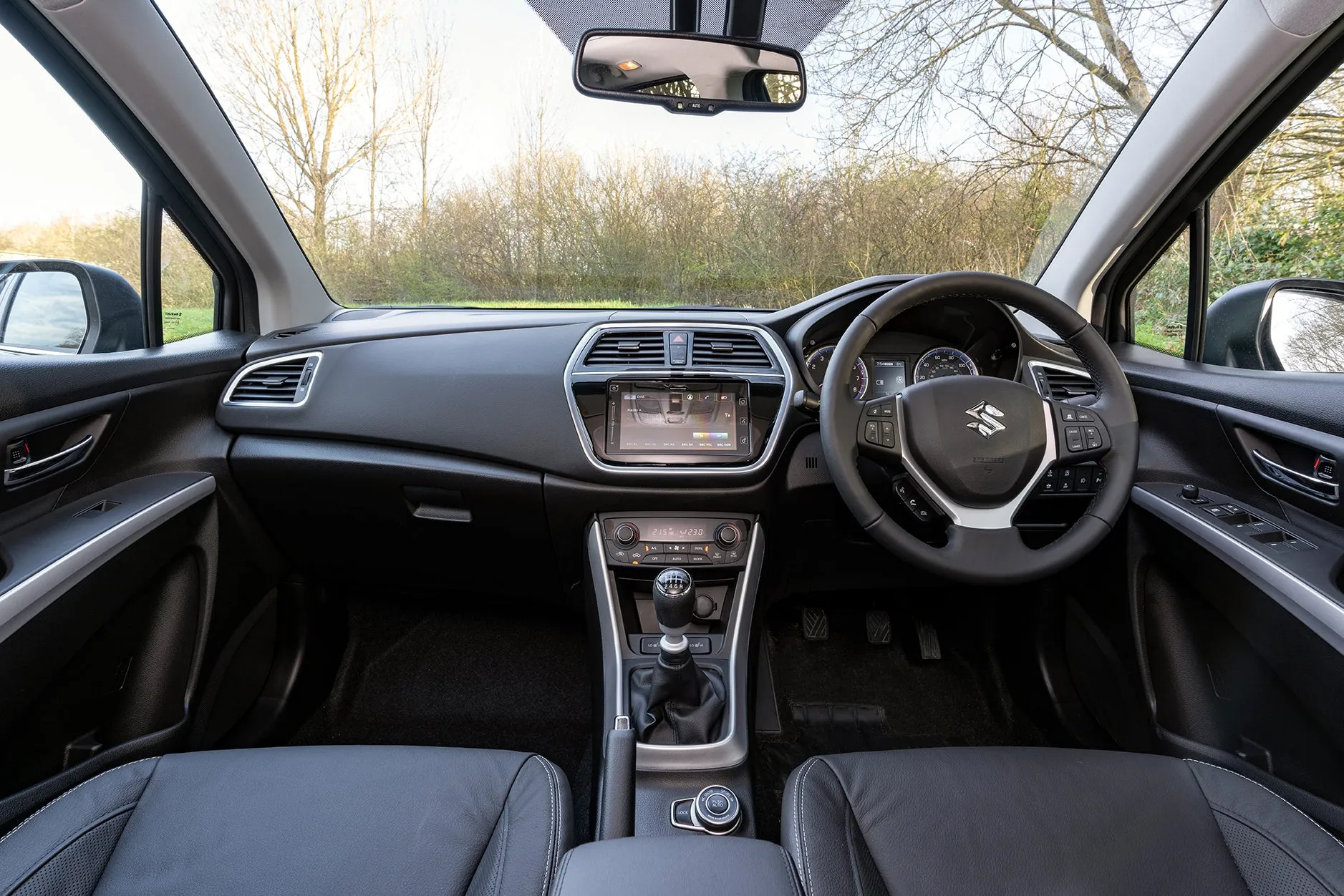
You could be forgiven for thinking it was a completely new model. The front is almost unrecognisable, with a new grille, a different bumper design and redesigned headlights, all designed to give it a more typical SUV look. It wasn’t just a nip and tuck…
Not much changed inside the SX4 S-Cross. The dashboard layout was the same whether it was a facelifted SX-4 S-Cross or not and was finished largely in hardwearing but durable plastics, though there was a soft-touch inlay plus a new and easier-to-use touchscreen system for post-2016 cars. Back seat space was ample for children, but in top models, the panoramic roof reduced the level of headroom.
Quality and finish
The Suzuki SX-4 S-Cross was solidly engineered and well-built. The interior may have lacked some of the smarter materials of its rivals, but it was well screwed together and attracted little in the way of reliability issues from people who owned them. There was very little to say in the way of recalls, either. All these factors combined demonstrated that this was, and still is, a car unlikely to cause serious reliability headaches.
Infotainment: Touchscreen, USB, sat-nav and stereo in the Suzuki SX4 S-Cross
There was a reasonable provision of infotainment, with even the entry-level SZ4 trim getting DAB radio, a USB port and Bluetooth connectivity. It was also the trim to go for if you needed a CD player - this simpler set-up (compared to models higher up the range) meant it was the only trim that got one. All other trims relied on phone/USB connectivity as this was becoming the norm.
SZ-T and SZ5 trim levels got a full touchscreen infotainment system in 2016. This meant integrated sat-nav and Smartphone Link, which enabled you to mirror a simplified version of your Apple or Android smartphone onto the screen. The system lagged behind what you could get from other manufacturers, as it could be a little slow to respond and a bit on the fiddly side. These models also had a reverse-parking camera, though only SZ5 added front and rear reversing sensors.
Space and practicality: Suzuki SX4 S-Cross boot space
As practical as ever with lots of space inside, the S-Cross was particularly good for passengers sitting in the back. It also boasted a large boot with a wide opening, which was easy to get a pushchair into. The boot was a reasonable size at 430 litres (matching the same-era Nissan Qashqai) and it could be expanded to 875 litres by folding the rear seats. The load deck was flat but was quite high off the ground, which meant lifting items up and in could be tricky.
As a family car, it ticked compact Vitara boxes and was helped by a longer wheelbase. A panoramic sunroof was offered on top-spec cars. While this created a light and airy environment inside the SX4 S-Cross, it did rob some headroom.
Handling and ride quality: What is the Suzuki SX4 S-Cross like to drive?
"In terms of driving, the SX4 S-Cross was surprisingly impressive. Body control was good in corners and the steering was precise with a decent weight, although as with many cars from that era, there was little in the way of 'feel', not that it diminished the way it drove."
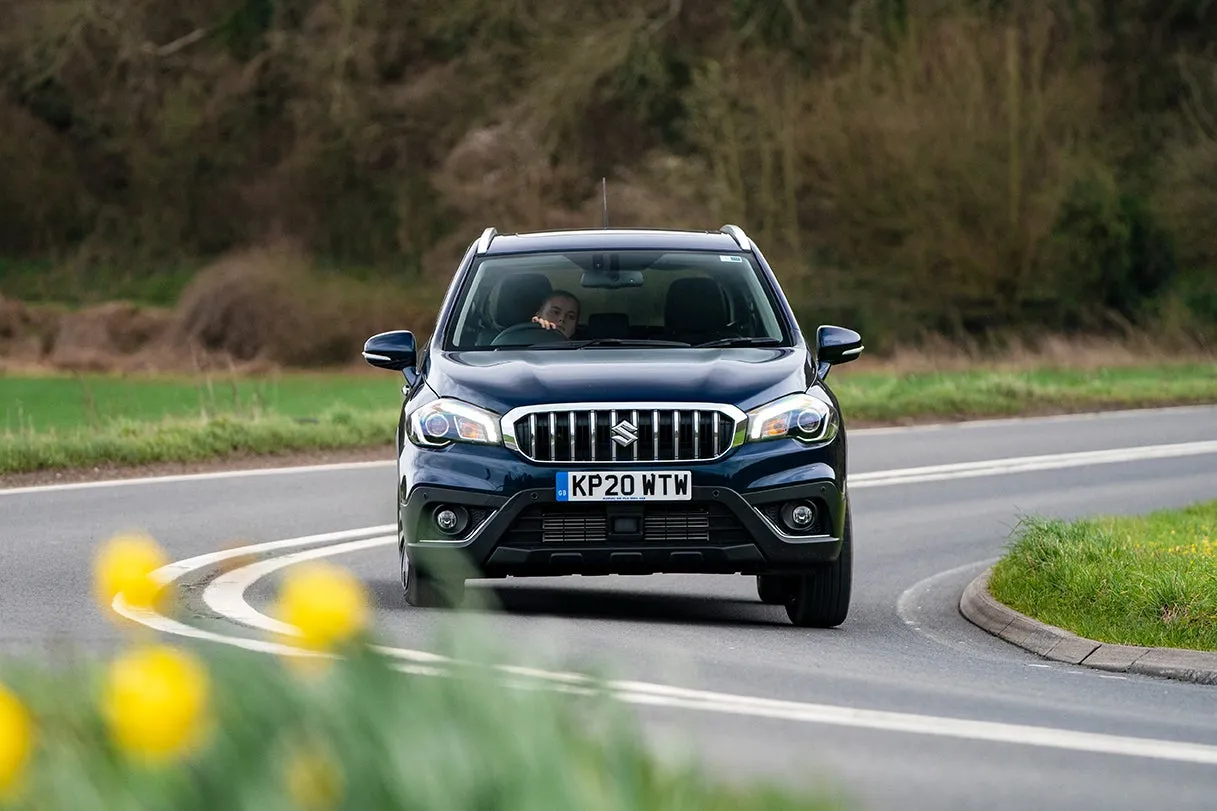
The ride was a touch on the firm side, particularly the rear suspension set-up which could be noisy over poor roads, but the the S-Cross was mostly comfortable and smooth.
Alongside the standard front-wheel drive models, the S-Cross also had 4WD with Suzuki's AllGrip four-wheel drive system. This on-demand system was controlled by a neat dial on the central console and featured different modes including snow, automatic and sport. In auto mode it ran as a front-wheel drive, only going into 4WD when needed while snow mode used 4WD as a default. The Sport mode made the accelerator pedal more responsive and set more power to the rear wheels.
The suspension was good, and provided comfortable ride quality over most road surfaces, albeit with the odd thump over manhole covers or potholes. The handling was neat and predictable, but there was some noticeable body roll when pressing on at higher speeds. The steering could've provided a bit more weight and precision too.
But there were no complaints at lower speeds. In town, the S-Cross felt no bigger than a typical family hatchback, while on A- or B-roads it was relaxed and easy to get on with. On the motorway, there was enough power in reserve to make overtaking easy, albeit with a bit of wind noise. Thankfully it was never obtrusive.
What engines are gearboxes are available in the Suzuki SX4 S-Cross?
Originally offered with a 1.6-litre diesel and a 1.6-litre petrol. Both produced the same peak power figure of 120PS but the diesel had a significantly higher torque output – 320Nm as opposed to 156Nm – something available lower down the rev range.
Both were much improved from late 2016 onwards and these are the ones you should seriously consider.
The old 1.6-litre petrol was replaced by a 1.0-litre BoosterJet petrol. A small engine such as this may sound off-putting in what is a fairly big car, but there’s no reason to be – the 111PS 1.0-litre was turbocharged to produce more torque and almost as much power.
It was available with a five-speed manual or six-speed automatic with front-wheel drive, plus an all-wheel drive manual. Even the least efficient all-wheel drive version was officially capable of 53.3mpg, so running costs should be low, while emissions range from 113g/km to 119g/km.
It was smooth and much quieter than the old engine, plus it was easier to use since peak torque of 170Nm is available from low engine speeds. Consequently, it was very forgiving of lazy gear changes.
The 2016 facelift also saw the introduction of a TCSS automatic gearbox for the SX-4 S-Cross. It was very impressive. Until then, the only automatic in the S-Cross range was the CVT with the 1.6-litre petrol, but the TCSS was far better and had one of the best twin-clutch gearboxes on the market.
The 1.6 DDiS diesel was well suited and offered plenty of pulling power thanks to the 320Nm of torque available from low revs. The shifts were quick and smooth with the S-Cross showing a surprisingly rapid turn of pace when required.
It also responded well if you asked it to kick down a gear. The only minor criticism we had was that it could hold gears for a little too long at times, making things a bit noisy as the diesel clattered towards the redline. There was a manual mode, plus there were also paddles on the steering wheel, but the gearbox worked well enough for the most part, so there was no real need to use them. Instead, you could leave it in D and let the transmission do the work.
Further changes came in 2020, with the introduction of a mild hybrid system on the 1.4-litre Boosterjet. Similar in basic principle to the 12V Hybrid system that Suzuki introduced in 2016 on smaller models, the newly developed 48V Hybrid Powertrain remains very lightweight in design and the components add less than 15kg to the overall weight of the vehicle.
The Suzuki SHVS (Smart Hybrid Vehicle by Suzuki) system contained a 48V lithium-ion battery, Integrated Starter Generator (known as ISG) and 48V-12V (DC/DC) converter to power components requiring lower voltage including lights, audio and air conditioning. The ISG acted as both a generator and starter motor, was belt driven and assisted the petrol engine during vehicle take off for a higher torque with 235Nm available from 2,000rpm.
The compact lithium-ion battery stored electrical energy recovered from deceleration and braking and incorporated an idle stop function operated via the Integrated Starter Generator. This battery, along with the DC/DC converter unit, was located under the front seats to assist with overall weight distribution.
A further benefit of the newer 48V Hybrid system was the introduction of electric motor idling when the clutch was disengaged and the engine speed was at approximately 1,000rpm. This feature essentially replaced fuel injection with power from the electric motor to control and maintain engine idling at vehicle speeds below 10mph and when stationary.
Refinement and noise levels
The engine to really look out for is the 1.6-litre diesel. This is the engine that really stands out in the Suzuki SX-4 S-Cross range as being on the noisy side. It’s loud at start up and, although some of this dies down as the engine warms up, it continues to be loud in most conditions.
The 1.0-litre and 1.4-litre Boosterjet petrol engines were far more refined. While their peppy nature meant they were rather thrummy under heavy acceleration, they settled down nicely on the open road.
Wind and road noise was kept well in check and the SX-4 S-Cross was remarkably refined at speed.
Safety equipment: How safe is the Suzuki SX4 S-Cross?
The Suzuki SX-4 S-Cross had a good list of safety features, ticking all the key boxes, but nothing made you think that Suzuki had gone the extra mile. That said, there was not much to grumble about, either. Kit included safety features like adaptive cruise control and automatic braking, and a high level of passive safety specification thanks to its lightweight but strong bodywork. It scored five stars when it was crash-tested by Euro NCAP in 2013.
All SX-4 S-Cross models came with a can of puncture repair foam and a compressor instead of a space saver or full-size spare wheel. A spare wheel was an option and third-party providers offered a ‘spare wheel in a bag’ if you consider that a must-have.
MPG and fuel costs: What does the Suzuki SX4 S-Cross cost to run?
"If you want the most economical Suzuki SX-4 S-Cross, you need either the older diesel or the 1.0-litre Boosterjet five-speed manual."
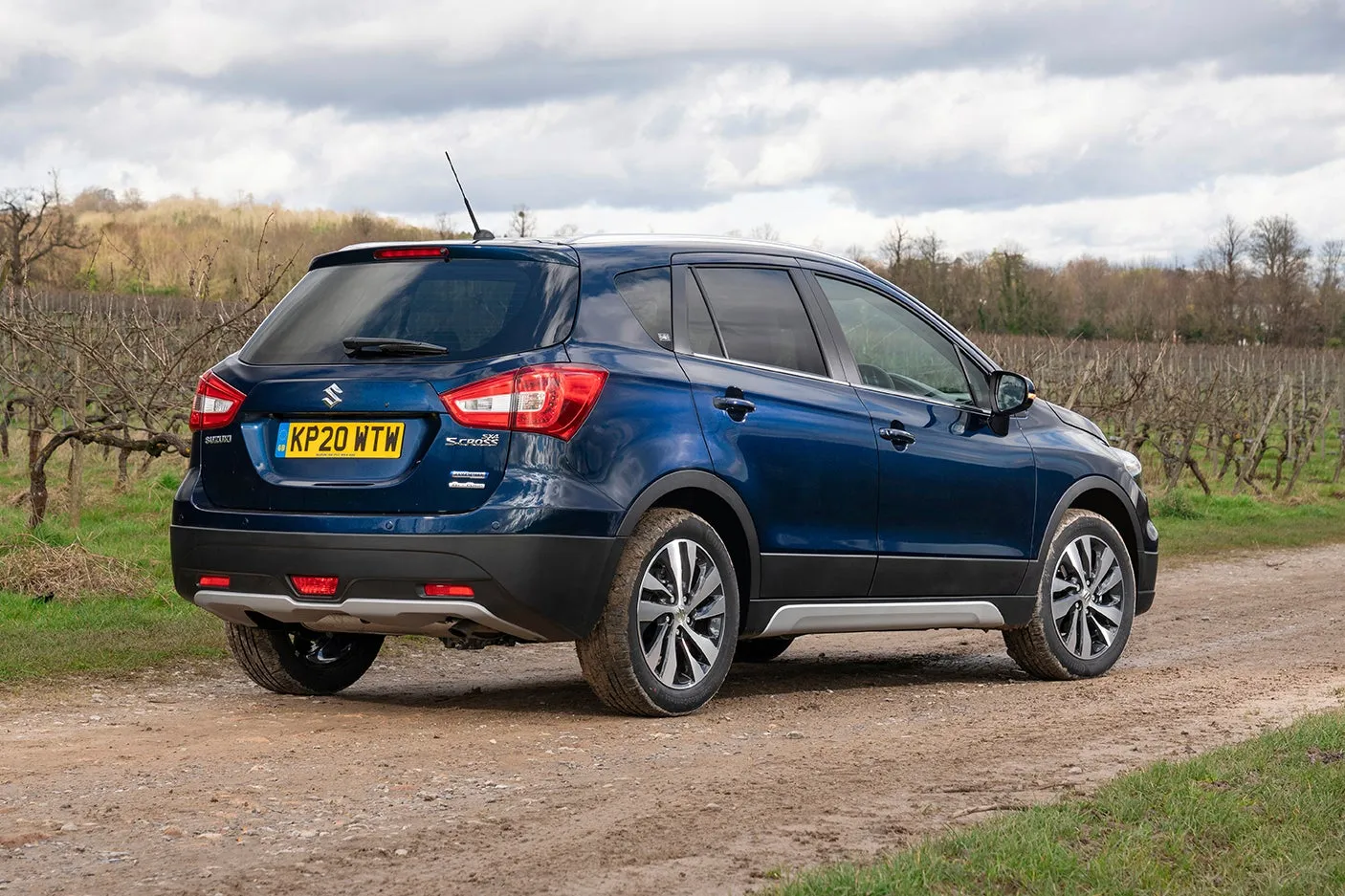
If you can, go for that 1.0-litre, as it’s a really capable engine and a huge improvement on the diesel. In front-wheel-drive form, it will return 56.5mpg and gives CO2 emissions of 113g/km. The Allgrip four-wheel-drive option drops fuel economy down to 53.3mpg. The 1.4-litre Boosterjet engine only comes with Allgrip four-wheel-drive, and comes in at 50.4mpg, with emissions of 127g/km."
Suzuki SX4 S-Cross reliability and warranty
Newer 2024 cars will still be under Suzuki's three-year warranty. After this warranty expires, the Service Activated Warranty kicks in, boosting this to seven years or 100,000 miles. Cars fitted with a DPF were known to clog, it's worth taking a used example on a long-ish drive before parting with cash.
Suzuki scored 17th place out of 29 car manufacturers in the latest HonestJohn.co.uk satisfaction index.
Suzuki SX4 S-Cross insurance groups and costs
The SX-4 S-Cross was a little more expensive than its competitors for insurance. The updated SX4 S-Cross starts with the 1.0-litre SZ4 in group 16, but higher trim models can be up to group 21, with the 1.4-litre Boosterjet in insurance group 24. You’ll find that the Skoda Yeti is in groups 15 to 22 and the Nissan Qashqai is 13 to 19.
Helping the SX-4 S-Cross insurance ratings are an immobiliser and Thatcham Category 1 standard alarm fitted as standard to all models.
VED car tax: What is the annual road tax on a Suzuki SX4 S-Cross?
It's easy to get stung here if you select the wrong trim. The 1.4 Boosterjet hybrid SZ4 registered from 24 March 2020 - 31 March 2020 emitted 104g/km of C02. You'll pay £195 for the first year and £190 thereafter if you buy one of these.
The SZ5 1.4 Boosterjet hybrid Allgrip emits 141g/km of c02. This means it'll cost £270 for the first year, followed by £190 afterwards.
Suzuki SX-4 S-Cross price
"The Suzuki SX-4 has been around for some time, which means that there’s a wide spread of price points and something to suit almost any budget."
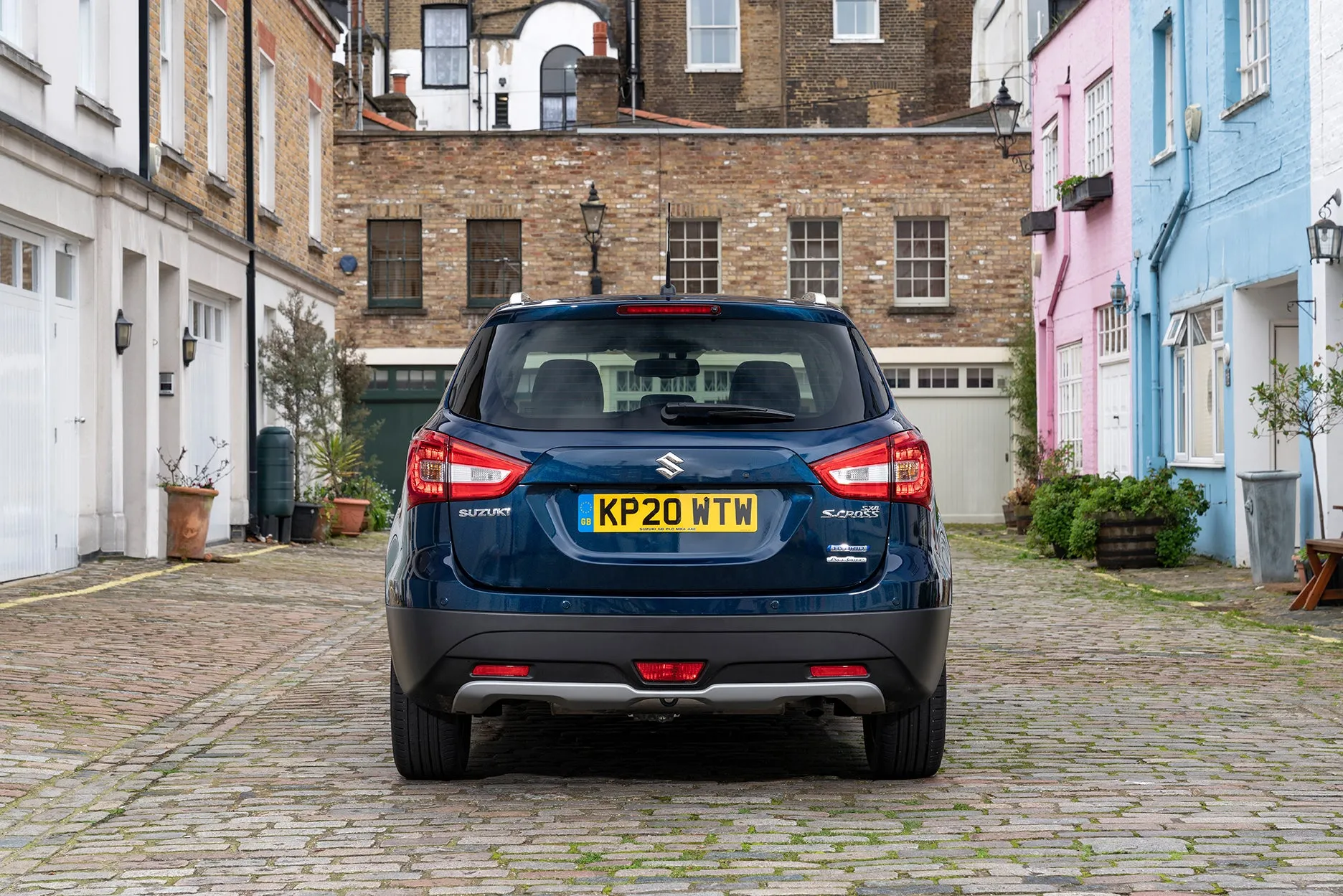
Early high-milers start from £2,800 while new sub-5,000-mile 2024 cars start at £22,000. There's a sweet spot, however, as 2021 cars with just 20,000 miles can be had for £11,800.
Trim levels and standard equipment
The range kicked off with SZ3. This had 16-inch alloy wheels with manual air conditioning, cruise control, CD audio with USB connector, body colour mirrors and handles, power-adjustable door mirrors, heated door mirrors plus a tilt and telescopic steering wheel.
Next up was the SZ4, with 17-inch alloy wheels, silver roof rails, silver front, rear and side skid plates, front fog lamps, dual-auto air conditioning, rear privacy glass, Bluetooth, leather steering wheel plus keyless entry and start.
The mid-range SZ-T added DAB radio, rear parking camera, rear parking sensors and polished 17-inch alloy wheels.
The range-topping SZ5 got leather seats, auto headlights and wipers, HID headlights, LED daytime running lights, power-folding door mirrors, panoramic glass roof, front parking sensors, auto-dim rear view mirror and heated front seats.
Ask the heycar experts: common questions
Is the Suzuki SX4 S-Cross worth it?
Do Suzuki still make the SX4 S-Cross?
Get our latest advice, news and offers
Keep me updated by email with the latest advice, news and offers from heycar.
By submitting you agree to our privacy policy
